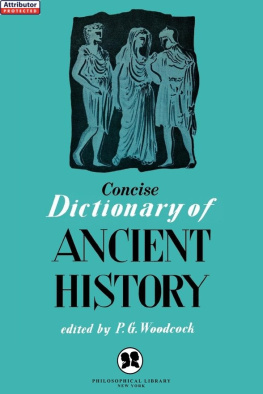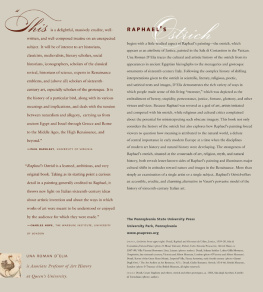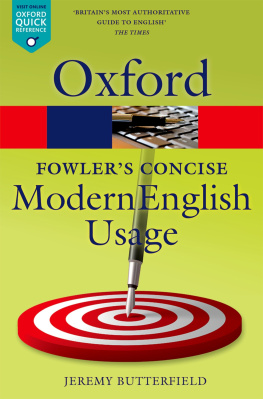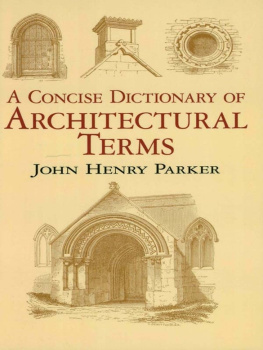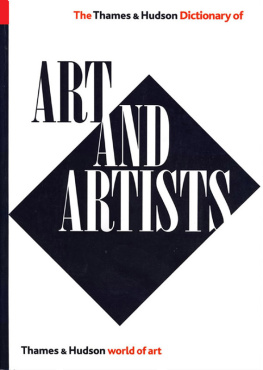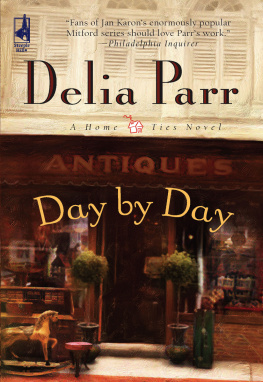Copyright 2001 by
FITZROY DEARBORN PUBLISHERS
All rights reserved including the right of reproduction in whole or in part in any form. For information write to:
First published by:
FITZROY DEARBORN PUBLISHERS
This edition published 2011 by Routledge:
Routlege
Taylor & Francis Group
711 Third Avenue
New York, NY 10017
Routlege
Taylor & Francis Group
2 Park Square, Milton park
Abingdon, Oxon 0X14 4RN
British Library and Library of Congress Cataloguing in Publication Data are available
ISBN 157958-3350
ISBN 9781-13659901-9 (epub)
First published in the USA and UK 2001
Typeset by Lorraine Hodghton, Radlett, Herts, UK
Cover illustration:
Self-Portrait in Profile Facing Left, Drawing by Kthe Kollwitz,
1933; National Gallery of Art, Washington, DC, Rosenwald
Collection
EDITORS NOTE
to the complete Dictionary of Women Artists (1997)
The Dictionary of Women Artists contains substantial entries on artists working in a wide variety of media from the Middle Ages to the present day, in countries throughout Europe as well as America and Australasia. To set the work and careers of the individual artists in context, introductory essays examine training opportunities and the changing conditions of work for women since the medieval period. A survey on women as artists in the Middle Ages assesses the evidence for womens participation in the arts in earlier periods.
The book is the fruit of the extensive scholarly interest in the subject of women artists that has been manifested since the 1970s, as part of a wider re-examination of womens history. While there are already very useful works of reference in the field, no previously published dictionary has covered such a wide-ranging historical and geographical span with such detailed entries. The list of artists was initially drawn up in consultation with the advisers whose names are listed below. It was expanded and refined through the suggestions of contributors. For practical reasons, certain firm parameters were established at the outset: the project would be concerned only with the Western tradition in art, and it would exclude women born after 1945; the emphasis would be historical rather than contemporary, and no attempt would be made to cover architecture, interior or garden design, or fashion.
Major themes of the book are the problems women encountered in trying to obtain adequate training, and their endeavours to gain professional recognition and status comparable to that of men; the concentration is thus on the fine arts of painting and sculpture. But the areas in which women have traditionally been employed are by no means neglected. Survey essays on printmakers and copyists shed light on the activities of those who operated on the margins of the official art world, and there are entries, for example, on 16th- and 17th-century printmakers, 18th-century textile designers and goldsmiths, and 19th-century ceramists. For the most part, however, the contribution of women to the applied arts was anonymous, or at least poorly documented, and therefore unsuited to the format of the entries included here. For continuity with the earlier periods, there are also entries on the most innovative 20th-century artists and designers working in the fields of ceramics, textiles and metalwork, including important women members of the Wiener Werksttte and the Bauhaus. But these professional women were not the only ones who aspired to be artists, and although professionalism is perhaps the most dominant theme in the book, attention is also given to the many women whose artistic activity was confined to the domestic sphere: the amateur artists from the middle and upper classes, whose work was regarded as a mere accomplishment and a social skill.
The selection of entrants never ceased to be problematic. Only a minority would satisfy those most obvious criteria for inclusion in a reference book: contemporary reputation or posthumous fame. And of those who do qualify on these grounds the women artists mentioned by Lodovico Guicciardini in the 16th century, for instance only a handful are adequately documented or have left behind a sufficient corpus of work to warrant an individual entry.
In a book dealing with such an area as this, it is perhaps inadvisable to talk of criteria for inclusion in any conventional sense at all; in many cases, the race was as important as the prize, and failure no ground for exclusion. A case in point is Anne Forbes: her derivative and rather mediocre work would in no way qualify her for inclusion in a dictionary of artists judged according to traditional art-historical norms, but her career, illuminated by surviving correspondence, offers a fascinating insight into the difficulties an 18th-century woman painter experienced in trying to establish herself. Thus in many ways this Dictionary may be regarded as an anthology, the entries demonstrating the extremely wide range of artistic activities in which women have been engaged; the roles accorded to them in a patriarchal society; and their responses to the constraints imposed upon them.
The book contains examples of artists who worked in the context of the convent, court or city; who were active as members of a family workshop or married into one; who were pupils, relatives, lovers or wives of well-known artists; who were representative practitioners within the genres traditionally associated with women: portraiture, still life, flower painting and genre; who established successful businesses, or who were amateur artists; who had exhibiting careers and gained some degree of professional recognition; who enjoyed popular success; who were educators or campaigners for womens artistic advancement; whose art and writings influenced other artists; who were associated with an avant-garde group, movement or trend; who were instrumental in the diffusion of modernism; who were themselves pioneers; whose work was or is pertinent to womens concerns; who explored issues of gender, race and identity; and artists who followed independent paths and cannot be categorised.
With only 600 entries, the Dictionary is inevitably selective, but the inclusion of one name at the expense of another who may have equal claims is an unavoidable consequence of the process of putting a book of this sort together and should not be taken to imply that the list of entries constitutes some kind of canon. We endeavoured to maintain an international balance, but there is an inescapable although not intentional Anglo-American bias, which largely stems from the abundance of literature on the subject in these areas. In the selection process, priority was weighted towards the earlier artists, to those who have attracted critical comment in at least their own language, those whose work was particularly relevant to womens issues and, for the more recent artists, those with a strong exhibiting career and public profile.
Artists are listed under their professional name the one that they first or most frequently worked or exhibited under in a form current in their lifetime; cross-references are provided from alternative names that the reader is likely to come across in the literature. The entries contain basic biographical information, a list of exhibitions (where appropriate), a bibliography and a signed critical essay contributed by a specialist on the artist concerned. The headnote points to the main areas of an artists activity; she would, for example, be described as a writer only if this formed an integral part of her work as an artist. The outline biography is intended to provide a framework for the critical discussion of the artists work in the essay. Major awards are mentioned here, unless they accompany an exhibition cited in the list below. Every effort has been made to ensure that the information provided is accurate. In many cases, the contributors own archival research produced results that differed considerably from published sources; dates of birth proved particularly fluid.




